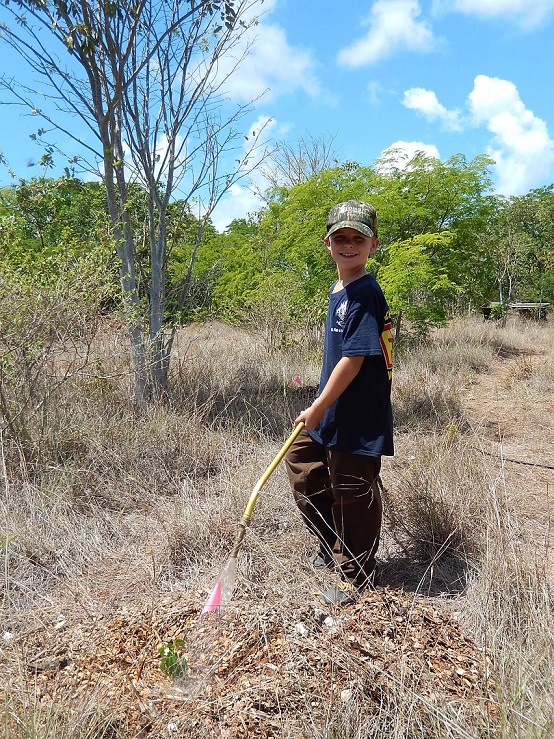Go Native: Landscape Choices that Support Wildlife and Weather the Storm

If your back yard took a beating and you’re ready for restoration, now’s your chance to step into stewardship of Florida Keys wildlife heritage. This year’s Saturday, March 10th through Saturday, March 17th Outdoor Fest celebration hosted by US Fish and Wildlife Service’s Florida Keys National Wildlife Refuges Complex and their Friends group Florida Keys Wildlife Society offers get-your-hands dirty gardening workshops and pollinator garden lessons that educate the importance of replacing invasive exotic plants with natives, and free native plant and tree giveaways during the Saturday Wildlife Fairs in Big Pine Key and Key Largo.
Landscaping with native plants is one of the many ways you can contribute to the conservation of our natural habitats.
“Native plants in the Florida Keys are resilient when faced with hurricanes and tropical storms,” says Refuge Ranger Jeremy Dixon. “For millennia, these plants have adapted mechanisms that not only make them survive these violent storms, but also makes these plants very quickly recolonize damaged areas.”
The Blue Hole Butterfly and Wildlife garden planted by residents during last year’s Outdoor Fest is one such example. Most of these native plants, such as the Corky Stem Passion Flower, survived the storm, and continue to serve as larval host plants for several butterflies, including Florida’s state butterfly, the Zebra Longwing.
In general, native plants require less maintenance, enhance landscape diversity, provide patches of habitat and food for wildlife with increased wildlife viewing for homeowners, and are more storm-sturdy, while invasive exotic plants displace native species, change ecological functions and structures, and sometimes hybridize with natives.
“Some of the most troublesome invasive plants we have on the refuge include Brazilian pepper and Australian pine,” says Dixon. “They can out-compete native plants and the wildlife that depends on the native plants suffer.”
Take a look at the space you have. Native flowers make for great pollinator gardens, while native fruit-bearing trees like shortleaf, strangler fig, blolly, gumbo limbo, pigeon plum, and seagrape are suitable for larger yards. Native understory trees, such as Pigeon plum, Jamaican caper and Marlberry, provide privacy, shade, and habitat for wildlife.
“There are hundreds of natives,” says Refuge Ranger and Outreach Coordinator Kristie Killam. “Some are great groundcover, like blue porterweed or golden creeper. Some are small wildflowers that make wonderful pollinator gardens like Bahama senna, Spanish needle, or firebush. Some are trees, that can get big. It really depends on people’s circumstances.”
Whether you’re aiming to restore your storm-trodden landscaping, make a backyard habitat for wildlife, or amp up the beauty of your botanical offerings, remember to go native with your plant, tree, and shrub selections, which support our unique ecosystem. By choosing the right plants for your yard, you can play a positive role in Florida Keys wildlife conservation.
“Landscaping with native plants can make a huge difference for wildlife,” says Killam. “One tree can make a difference. One person can make a difference.”
To learn more about native plants and landscaping and how they support our local wildlife, check out the upcoming Outdoor Fest this March, visit floridakeyswildlifesocie ty.org, stop in at the visitor center on Big Pine Key. For more information contact Refuge Ranger Kristie Killam at 305.304.9625, or email Nancy or Jan at [email protected] . Brought to you in part by the Monroe County Tourist Development Council.


Facebook Comments